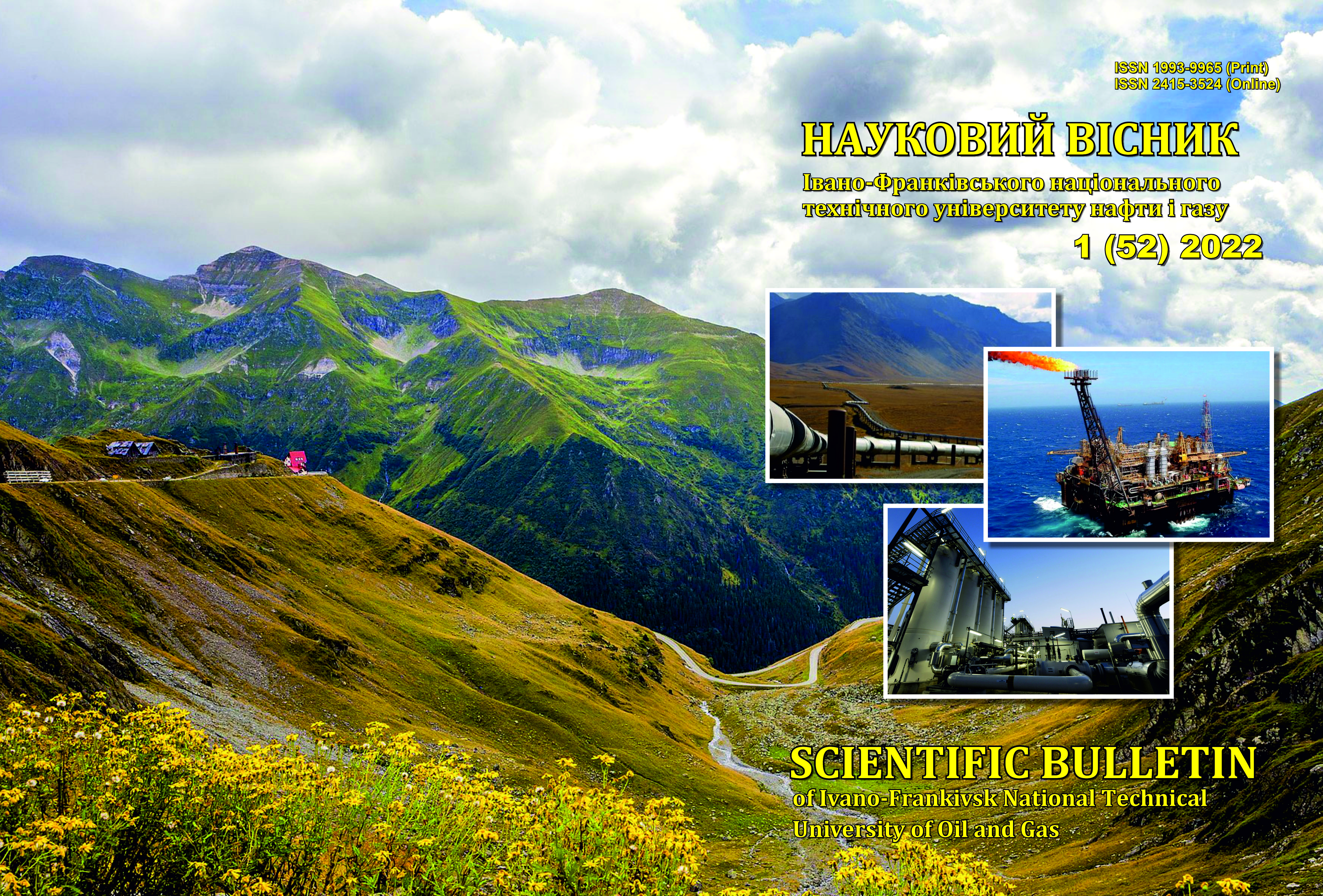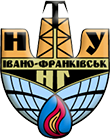Перспективи використання гібридного аддитивно-субтрактивного виробництва
DOI:
https://doi.org/10.31471/1993-9965-2022-1(52)-34-41Ключові слова:
Гібридний технологічний ланцюжок, аддитивне виробництво, ASHM, моделювання процесу різанняАнотація
Технології адитивного виробництва (Additive Manufacturing), дедалі ширше використовуються у сучасному виробництві, набувають дедалі більшого значення, що зумовлює постійно зростаючий ринок. Даний набір технологій дає можливість створювати дуже складні металеві деталі зі складною поверхнею та низькою пористістю та гарними механічними властивостями. Адитивне виробництво широко використовується в таких областях, як автомобілебудування (завдяки швидкому та практично серійному виробництву працездатних прототипів з таких матеріалів, як титан, алюміній або сталь), авіабудування (можливості створювати деталі з алюмінію або титану за індивідуальними проєктами, наприклад, лопаті з внутрішніми каналами охолодження), стоматологія (дозволяє створювати точні вироби. такі як штангові кріплення або коронки та мости з таких матеріалів, як сплав кобальту з хромом або титану), охорона здоров'я (створення імплантів та протезів суглобів та кісток з титану. Дозволяє створювати складні градчасті структури). Однак, багатошаровий виробничий процес має певні недоліки, такі як відносно висока шорсткість поверхні, низька геометрична точність, а також необхідність видалення підтримуючих конструкцій після процесу друку деталі та подальшої термообробки. Тому існує попит на методи постобробки, що пропонують таку ж гнучкість проєктування, як і процес адитивного виробництва. Для вирішення цієї проблеми слід використовувати комбінацію з адитивних та субтрактивних методів обробки, а саме адитивна/субтрактивним гібридним виробництвом (Additive/SubtractiveHybridManufacturing – ASHM). Однак потрібно звернути увагу і на те, що методики розрахунку технологічних параметрів для адитивного виробництва мало вивчені. Теплові властивості оброблюваних матеріалів, які істотно залежать від зміни температури різання, значно впливають на характеристики термічної обробки. Тому теплові властивості, які використовуються для чисельного моделювання процесу різання, повинні визначатися залежно від температури різання.
Завантаження
Посилання
Lauwers B., Klocke F., Klink A., Tekkaya A.E., et al., Hybrid processes in manufacturing, CIRP Annals-Manuf. Technol. 2014. No 63/2. P. 561–583. URL: https://doi.org/10.1016/j.cirp.2014.05.003.
Grzesik W., Advanced machining processes of metallic materials, Amsterdam, Elsevier. 2017. URL: https://www.elsevier.com/books/advanced-machining-processes-of-metallic-materials/grzesik/978-0-08-044534-2
Zhu Z., Dhokia V.G., Nassehi A., Newman S.T., A Review of hybrid manufacturing processes, Int. J. Comp. Integr. Manuf., 2013, No 26, P. 596–615. URL: https://doi.org/10.1080/0951192X.2012.749530
Norfolk M., 2018, The top 5 reasons hybrid additive manufacturing make sense, https://fabrisonic.com/top-five-reasons-use-hybrid-additive-manufacturing-machines-vs-single-focus-special-machines-running-parallel/
Hudson R., Hybrid system combines additive and subtractive manufacturing. URL: https://www.aerospacemanufacturinganddesign.com/article/hybrid-system-combines-additive-subtractive-manufacturing/
Yamazaki T., Development of a hybrid multi-tasking machine tool: Integration of additive technology with CNC machining, Proc. CIRP, 2016, No 42, P. 81–86. URL: http://dx.doi.org/10.1016/j.procir.2016.02.193
Hascoët J-Y., Querard V., Rauch M., Interests of 5 axis toolpaths generation for wire ARC additive manufacturing of aluminium alloys, J. Mach. Eng., 2017. No 17/3, P. 51–65. URL: http://yadda.icm.edu.pl/yadda/element/bwmeta1.element.baztech-7e3203dd-6426-4b82-bbd2-257b322df0ea
Du W., Bai Q., Zhang B., A novel method for additive/subtractive hybrid manufacturing of metallic parts, Proc. Manuf. 2016. No 5. P. 1018–1030. URL: http://dx.doi.org/10.1016/j.promfg.2016.08.067
Jones J.B., 2014, The synergies of hybridizing CNC and additive manufacturing, Hybrid Manufacturing Technologies Ltd. URL: https://www.semanticscholar.org/paper/The-Synergies-of-Hybridizing-CNC-and-Additive-Jones/ca8e2e920ebc7eb5abfbca7e505e0faa3d71a5c6
Manogharan G., Wysk R., Harrysson O., Aman R., AIMS – a metal additive hybrid manufacturing system: system architecture and attributes, Proc. Manuf. 2015/ No 1. P. 273–286. URL: https://doi.org/10.1016/j.promfg.2015.09.021
Thompson MK, Moroni G, Vaneker T, Fadel G, Campbell RI, Gibson I, Bernard A, Schulz J, Graf P, Ahuja B, Martina F Design for additive manufacturing: trends, opportunities, considerations, and constraints. CIRP Ann. 2016. No 65(2). P.737–760 URL: https://doi.org/10.1016/j.cirp.2016.05.004
Gebhardt A, Kessler J, Thurn L (2016) 3D-Drucken: Grundlagen und Anwendungen des Additive Manufacturing (AM). 2, neubearbeitete und, erweiterteedn. Carl HanserVerlag, München URL: http://files.hanser.de/Files/Article/
ARTK_LPR_9783446446724_0001.pdf
Hashimoto F, Chaudhari RG, Melkote SN (2016) Characteristics and performance of surfaces created by various finishing methods. Proced CIRP 45:20 URL: https://dx.doi.org/10.1016/j.procir.2016.02.052
Ding D, Pan Z, Cuiuri D, Li H Wire-feed additive manufacturing of metal components: technologies, developments and future interests. Int J Adv Manuf Technol. 2015. No. 81(1–4). P. 465–481 URL: https://doi.org/10.1007/s00170-015-7077-3
variations management for additive manufactured product. CIRP Ann ManufTechnol 66:161–164 URL: https://dx.doi.org/10.1016/j.cirp.2017.04.034
Wei D, Bai Q, Zhang B (2016) A novel method for additive/sub- tractive hybrid manufacturing of metallic parts. Proced Manuf 5:1018–1030. URL: https://doi.org/10.1016/j.promfg.2016.08.067
Iquebal A, Amri S, Shrestha S, Wang Z, Manogharan G, Bukkapatnam S (2017) Longitudinal milling and fine abrasive finishing operations to improve surface integrity of metal AM compo- nents. ProcedManuf 10:990–996. URL: https://doi.org/10.1016/j.promfg.2017.07.090
Karabulut Y., Kaynak Y., 2020. Drilling Process and Resulting Surface Properties of Inconel 718 Alloy Fabricated by Selective Laser Melting Additive Manufacturing, Procedia CIRP, 87, 355–359. URL: https://doi.org/10.1016/j.procir.2020.02.110
Astakhov V., Patel S., 2019, Development of the Basic Drill Design for Cored Holes in Additive and SubtractiveManufacturing, AdditiveandSubtractiveManufacturing, 3, 113–148, URL: https://doi.org/10.1515/9783110549775-003.
B Lauwers, F Klocke, A Klink, et al. Hybrid processes in manufacturing. CIRP Annals, 2014, 63(2): 561-583. URL: http://dx.doi.org/10.1016%2Fj.cirp.2014.05.003
G Manogharan, R A Wysk, O L AHarrysson. Additive manufacturing– integrated hybrid manufacturing and subtractive processes: economic model and analysis. International Journal of Computer Integrated Manufacturing, 2016, 29(5): 473-488. URL: https://doi.org/10.1080/0951192X.2015.1067920
L Li, A Haghighi, Y Yang. A novel 6-axis hybrid additive-subtractive manufacturing process: Design and case studies. Journal of Manufacturing Processes, 2018, 33: 150-160. URL: https://doi.org/10.1016/J.JMAPRO.2018.05.008
W Du, Q Bai, B Zhang. A novel method for additive/subtractive hybrid manufacturing of metallic parts. Procedia Manufacturing, 2016, 5: 1018-1030. URL: http://dx.doi.org/10.1016/j.promfg.2016.08.067
Additive Manufacturing in Milling Quality. www.dmgmori.com
Laser Deposition Technology (LDT): www.rpm-innovations.com.
Mourtzis D, Doukas M, Bernidaki D (2014) Simulation in manufacturing: review and challenges. Procedia CIRP 25:213–229. URL: https://doi.org/10.1016/j.procir.2014.10.032
Arrazola PJ, Özel T, Umbrello D, Davies M, Jawahir I (2013) Recent advances in modelling of metal machining processes. CIRP Ann Manuf Technol 62:695–718. URL: https://doi.org/10.1016/j. cirp.2013.05.006
Grzesik W (2020) Modelling of heat generation and transfer in metal cutting: a short review. J Mach Eng 20(1):24–33. URL: https://doi.org/10.36897/jme/117814
Courbon C et al (2021) A 3D modeling strategy to predict efficiently cutting tool wear in longitudinal turning of AISI 1045 steel. CIRP Ann 70(1):57–60. URL: URL: https://doi.org/10.1016/j.cirp.2021. 04.071
Eivani AR et al (2021) A novel approach to determine residual stress field during FSW of AZ91 Mg alloy using combined smoothed particle hydrodynamics/neuro-fuzzy computations and ultrasonic testing. J Magnes Alloys 9(4):1304–1328. URL: https://doi. org/10.1016/j.jma.2020.11.018
Heisel U et al (2009) Thermomechanical material models in the modeling of cutting processes. ZWF Z fuer Wirtsch Fabr 104(6):482–491. (In German). URL: https://doi.org/10.3139/104.110104
Storchak M, Rupp P, Möhring H-C, Stehle T (2019) Determination of Johnson–Cook constitutive parameters for cutting simulations. Metals 9(4):473. URL: https://doi.org/10.3390/met9040473
Melkote SN (2017) et. al.: Advances in material and friction data for modeling of metal machining. CIRP Ann 66(2):731–754. URL: https://doi.org/10.1016/j.cirp.2017.05.002
Saelzer J et al (2021) Modelling of the friction in the chip formation zone depending on the rake face topography. Wear 477:203802. URL: https://doi.org/10.1016/j.wear.2021.203802
Li J, et al (2021) An experimental and finite element investigation of chip separation criteria in metal cutting process. International Journal of Advanced Manufacturing Technology. 10.1007/ s00170-021-07461-0. URL: https://dx.doi.org/10.1007/s00170-021-07461-0
Heisel U et al (2009) Breakage models for the modeling of cutting processes. ZWF 104(5):330–339 (In German). URL: https://doi.org/10.3139/104.110057
Sela A et al (2021) Inverse identification of the ductile failure law for Ti6Al4V based on orthogonal cutting experimental outcomes. Metals 11:1154. URL: https://doi.org/10.3390/met11081154
Zhang C, Choi H (2021) Study of segmented chip formation in cutting of high-strength lightweight alloys. Int J Adv Manuf Technol 112:2683–2703. URL: https://doi.org/10.1007/s00170-020-06057-4
Storchak M, Kushner V, Möhring H-C, Stehle T (2021) Refinement of temperature determination in cutting zones. J Mech Sci Technol 35(8). URL: https://doi.org/10.1007/s12206-021-0736-4
Osorio-Pinzon JC, Abolghasem S, Casas-Rodriguez JP (2019) Predicting the Johnson-Cook constitutive model constants using temperature rise distribution in plane strain machining. Int J Adv Manuf Technol 105(1-4):279–294. URL: https://doi.org/10.1007/s00170-019-04225-9
Hu C et al (2020) Cutting temperature prediction in negative-rake- angle machining with chamfered insert based on a modified slip filed model. Int J Mech Sci 167:105273. URL: https://doi.org/10.1016/j.ijmecsci.2019.105273
Kumar A, Bhardwaj R, Joshi SS (2020) Thermal modeling of drilling process in titanium alloy (Ti-6Al-4V). Mach Sci Technol 24(3):341–365. URL: https://doi.org/10.1080/10910344.2019.1698607
Tu L et al (2019) Temperature distribution of cubic boron nitride–coated cutting tools by finite element analysis. Int J Adv Manuf Technol 105(7-8):3197–3207. URL: https://doi.org/10.1007/s00170-019-04498-0
Davies MA, Ueda T, M’Saoubi R, Mullany B, Cooke AL (2007) On the measurement of temperature in material removal processes. CIRP Ann 56(2):581–604. URL: https://doi.org/10.1016/j.cirp.2007.10.009
Arrazola PJ, et al. Recent advances in modelling of metal machining processes. Ann CIRP 2013;Vol. 62(Issue 2):695–718. URL: https://doi.org/10.1016/j. cirp.2013.05.006.
##submission.downloads##
Опубліковано
Як цитувати
Номер
Розділ
Ліцензія
Авторські права....


1.png)

















